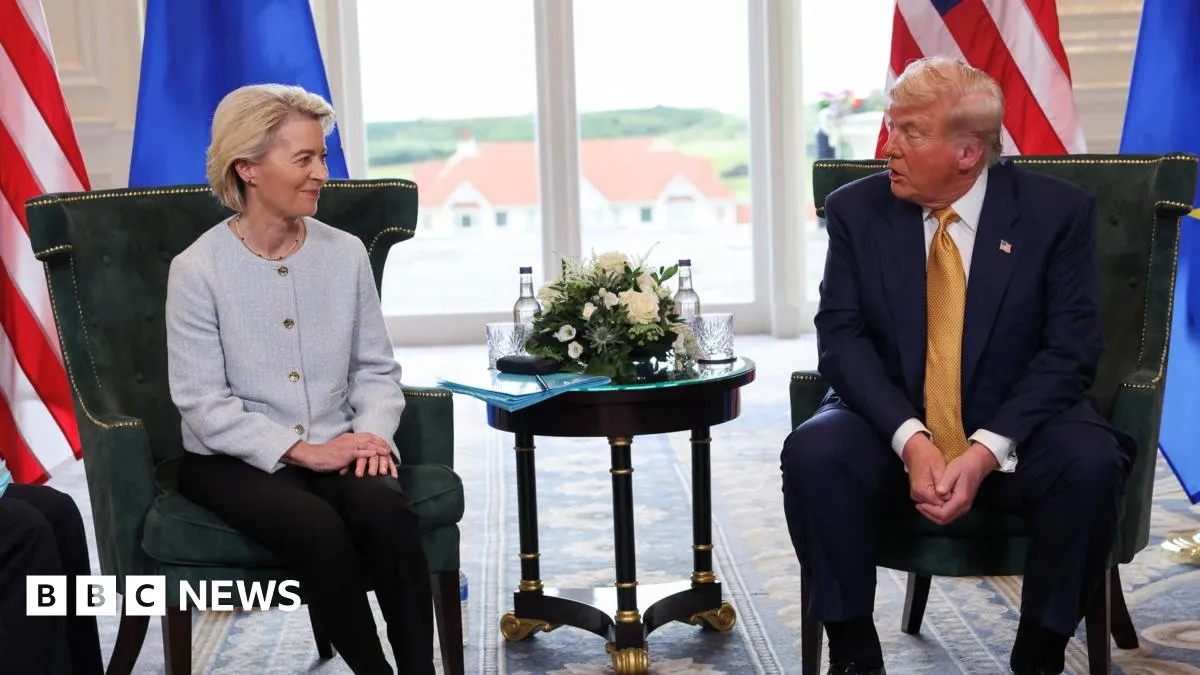
In a recent press conference, President Donald Trump expressed optimism about a new trade deal that he believes will be significantly beneficial for the automobile industry and the agriculture sector. Speaking to reporters at his golf resort in Turnberry, Scotland, Trump stated that this agreement would not only enhance trade relations but also pave the way for potential future deals with three or four other countries, which he anticipates will likely involve some form of tariffs.
The trade deal includes a 15% tariff rate on goods imported from the European Union, a reduction from earlier threats of a 30% tariff. This announcement was confirmed by Ursula von der Leyen, the President of the European Commission. As part of the agreement, there are also commitments for substantial investments and energy purchases from EU nations, signaling a deeper partnership between the US and Europe.
During his remarks, Trump emphasized that the deal is "a good deal for everybody," reinforcing the idea that it will foster closer ties between the two economic powerhouses. He described it as a partnership that would benefit both sides, while von der Leyen echoed his sentiments, calling it a "huge deal" that emerged after rigorous negotiations.
The trade ties between the United States and the European Union are among the most significant globally, with goods and services exchanged between the two forming one of the largest trading relationships in the world. In 2024, total trade in goods between the EU and the US is estimated to reach approximately $975.9 billion (£751.4 billion). Together, they account for nearly a third of global trade in goods and services, highlighting the critical nature of their economic relationship.
In the previous year, the US imported around $606 billion (£451 billion) in goods from the EU and exported approximately $370 billion (£276 billion), resulting in a notable trade deficit. This trade imbalance is a point of contention for Trump, who argues that it signifies that the US is at a disadvantage in these relationships.
As the trade discussions unfolded, Trump and von der Leyen engaged in a crucial meeting that could shape future economic policies. Despite the picturesque setting in Scotland, Trump admitted he was not in high spirits, stating there was a "50:50 chance" of reaching a trade agreement, citing three or four key sticking points that needed addressing. He emphasized the need for the EU to be more receptive to American products, while von der Leyen reiterated the importance of fairness and balance in any potential deal.
Stay tuned for more updates as we continue to provide live coverage of these pivotal US-EU trade talks, which hold significant implications for both economies.